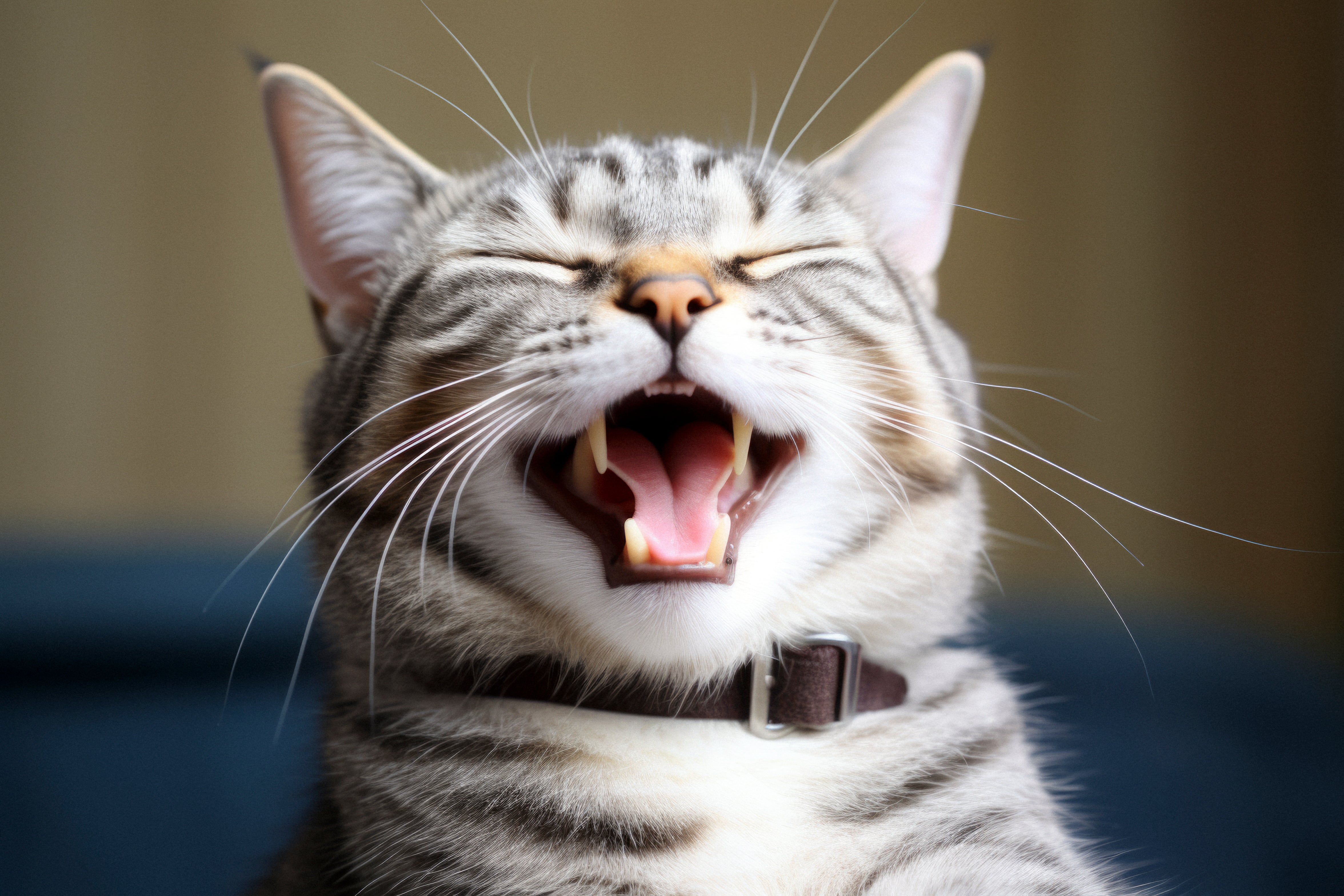Cats possess an extraordinary range of vocalizations—gentle cat purrs, dramatic yowls, high-pitched meow sounds, and much more—each serving as a sophisticated method of cat communication. These sequences of sounds, combined with subtle body language cues, create a rich language system that enables our feline companions to relay their needs, emotions, and intentions to fellow cats and human caregivers. From the quintessential sound of a meowing cat to sudden, high-pitched sounds of alarm, each noise offers a unique glimpse into the feline world.
Understanding these intricate cat sounds is crucial for any cat owner aiming to foster a deep bond and ensure a happy, healthy cat. Scientific research has uncovered that through thousands of years of domestication, friendly adult cats have adapted their communication to humans, producing random sounds, special sounds, and rhythmic sounds—some friendly sounds, some signaling defensive behaviors or a demand for attention. This adaptation most notably includes the development of the meowing sound as a tool for direct communication with people, which reveals the strength of the evolutionary bond between species.
Intro to Cat Sounds: Common Cat Sounds and What They Mean
Today, thanks to resources like 602 royalty-free cat sound effects collections, we can analyze and appreciate the incredible variety of cat noises beyond what we hear at home. When we listen closely, we hear meow-like sounds, comforting noises, t-like sounds, and rhythmic meows, each representing different meanings for sounds and emotional states.
Meows and Their Variations
The meowing sound is cats' primary way of engaging with humans, with every meow serving a distinct purpose. A high-pitched meow sound from a mother feline might be used to locate her month's kittens. Conversely, a low-pitched regular sound often expresses complaints or demand for cat food at the food dish. Meows for food, whether brief or prolonged, are everyday cat noises in kitchens everywhere. The meaning of cat sounds also shifts with pitch—ranging from a friendly greeting sound to a deeper tone signaling displeasure.
Excessive meowing can sometimes signal that something is wrong, from medical issues and health issues to a need for more stimulation or attention. Recognizing the exact meaning of cat noise—such as differentiating a steady sound for food from a pain shriek or screech of pain in emergencies—can be crucial for your cat's well-being.
Purrs, Chirps, and More
The cat purr is a classic sign of contentment, a steady sound that soothes the cat and those nearby. Mother cats often communicate with their kittens through purrs and raspy, nasal, high-pitched mew-like calls, reinforcing bonds and providing comfort during kitten interactions. Yet, not all purrs indicate pleasant situations; cats may also purr during scary situations or extreme conditions, such as when experiencing pain or stress—a phenomenon sometimes called "mom through purrs."
Cat chirps, rodent chirps, and prolonged chirps are other ordinary cat sounds you may notice, especially among Maine Coons or during moments of intense excitement or a mix of excitement as a cat observes prey through the window.
Warning Signals: Defensive and Threatening Sounds
Hissing, spitting, and growling are defensive sounds, often heard amid loud noises or when a cat feels vulnerable. These threatening sounds act as warnings in emergencies or life-or-death situations, whether caused by a sudden, high-pitched sound, the presence of another animal, or an intruding human. The physiological and behavioral responses—flattened ears, dilated pupils, raised fur—represent defensive behaviors inherited from their wild ancestors.
Pain shrieks, screeches of pain, and aggressive behavior call for immediate attention. Prolonged or excessive yowling, particularly in elderly cats, can indicate cognitive issues or underlying medical problems that may require veterinary guidance.
The Science of Cat Vocalizations and Sound Sequences
Modern studies show cats can have a broad spectrum of cat noises, from low, sonorous tones to high-pitched sounds and everything in between. Unlike dogs, cats rely heavily on vocal communication. Their ability to produce random sounds and sequences of sounds—often tailored to specific humans—sets them apart in the animal kingdom. Friendly adult cats and those raised in stimulating environments use more varied vocal tones, from moderate-tone meows to deep tones, often depending on context and personality.
Cats have also mastered generating special sounds, such as sexual calls during mating behaviors or specific sequences for normal and calm behavior. Environment, breed, and personality dictate the spread and variety of these sounds—from the talkative Siamese with its loud, meow-like sounds to the quiet Persian, who prefers a soft, friendly sound.
Context Matters: Understanding Meaning Through Environment and Body Language
Every cat sound must be interpreted in context, both physical and environmental:
- Comprehensive body language cues such as whisker position, tail flicks, ear orientation, and overall posture
- Environmental triggers such as loud noises, food bowls being filled, or new people entering the space
Observing the moments kittens interact with their mother feline or a cat meowing for food as you approach the food dish can provide clues about their emotional state and expected behavior. Whether it's a rhythmic meow during pleasant situations or a screech during extreme conditions, context guides interpretation.
Health Issues and Behavioral Red Flags
Changes in cat vocalizations sometimes warn of potential health issues:
- Medical issues such as thyroid problems or digestive issues
- Pain, evidenced by a pain shriek or screech of pain
- Excessive meowing suggests cognitive issues or anxiety
Cats that begin producing odd or noisy cat sounds beyond their usual routines or shift from friendly sounds to defensive or threatening ones may be experiencing medical concerns. Proactive observation and regular vet visits help catch these signals early.
Response and Relationship Building
A consistent response to your cat's everyday meow demands helps build trust and reduce anxiety. Recognizing a friendly sound versus an aggressive sound or knowing when a cat chirps signals excitement enhances your ability to foster a secure, enriching environment. Encourage calm behavior, address excessive meowing, and ensure cats feel safe to express their random sounds without fear.
Whenever appropriate, you can supplement learning about cat vocalizations by listening to royalty-free cat sound effects or downloading royalty-free cat sound effects online. These collections of authentic cat noises, such as the widely available 602 royalty-free cat sound effects, provide a valuable introduction to cat sounds for owners eager to better understand their feline companions.
Breed Influence, Socialization, and Early Life

Cat breeds exhibit unique vocal patterns: Siamese cats are recognized for their high-pitched sounds and excessive meowing. In contrast, Oriental breeds often produce a greater range of meowing and special sounds. Maine Coons are known for their cat chirps and prolonged chirps, while Persians might express more moderate tone meows.
Early socialization—especially with a caring mother feline—shapes how months kittens develop their repertoire of familiar cat sounds, including meow-like, t-like, and comforting purrs.
Conclusion
Understanding cat sounds is essential to responsible cat ownership and deepens the relationship between people and their pets. By actively listening for variations in pitch in tone, observing behavioral context, and staying alert to excessive meowing or unusual cat noises, we can recognize both normal behavior and warning signs of health issues. This knowledge ensures better care and a truly fulfilling and harmonious life alongside our remarkable feline companions.




















